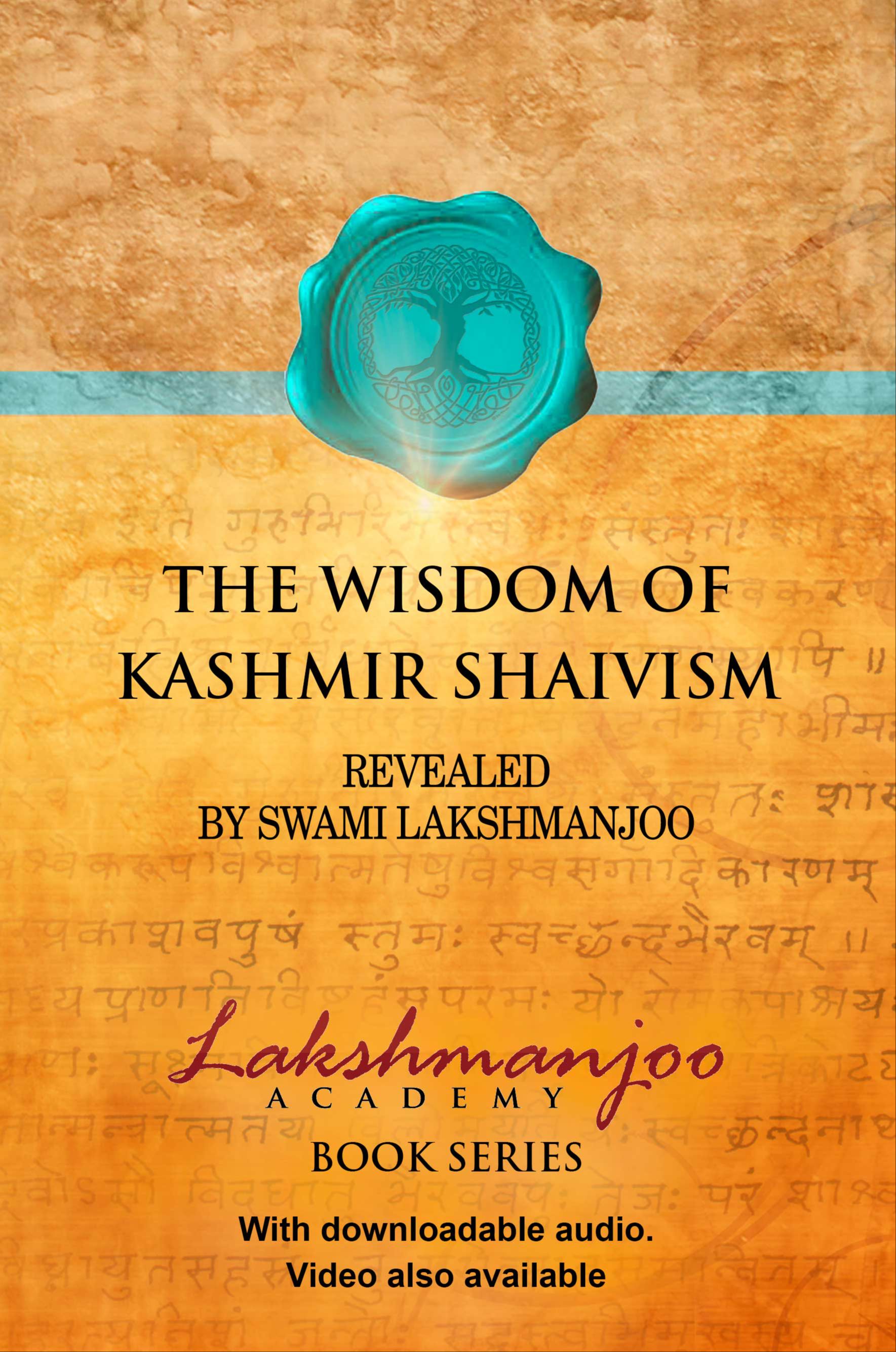
What is the real essence of the way we have to tread in Kashmir Shaivism? (Vijnana Bhairava verse 22-24)
Mar 30, 2024This lecture is an excerpt from the Vijnana Bhairava: The Manual for Self Realization by Swami Lakshmanjoo).
Introduction by John Hughes: “The narrative begins with Bhairavī, feigning ignorance, telling Bhairava that, even though She has heard all the various theories and explanations of the nature of reality, She still has doubts and is not completely satisfied. She implores Bhairava, “What is the real essence of the way we have to tread? Please, O Lord, remove My doubts entirely.”
Bhairava answers by telling Bhairavī that She has asked the question that is worth asking. He says it is a question–a secret question–that is the real essence of all Tantras. He then continues by explaining that all the processes illuminated in the Tantras are not meant for great or highly elevated souls, but for those who are not completely developed. He emphasizes that all these processes are just to begin with: “You begin with them and then leave them aside.” This is because, in reality, the supreme state is not achieved by the support of the means (upāya). These practices are only capable of assisting the aspirant to meet God halfway, and the rest happens automatically by the independent grace of Bhairava. But it is important to understand that even the mere thought or desire to practice is a sign of God’s grace.” Read more from the introduction of the Vijnana Bhairava here…

श्रीदेव्युवाच
देवदेव त्रिशूलाङ्क,
कपालकृतभूषण ।
दिग्देशकालशून्या च
व्यपदेशविवर्जिता ॥२२॥
यावस्था भरिताकारा
भैरवस्योपलभ्यते ।
कैरुपायैर्मुखं तस्य
परादेवी कथं भवेत् ॥२३॥
यथा सम्यगहं वेद्मि
तथा मे ब्रूहि भैरव ।
śrī devī uvāca
devadeva triśūlāṅka
kapālakṛtabhūṣaṇa /
digdeśakālaśūnyā ca
vyapadeśavivarjitā // 22 //
yāvasthā bharitākārā
bhairavasyopalabhyate /
kairupāyairmukhaṁ tasya
parādevī kathaṁ bhavet // 23 //
yathā samyagahaṁ vedmi
tathā me brūhi bhairava /
O Lord of lords, O [You who are] glorified by triśūla62 (triśūlāṅka) and kapāla kṛta bhūṣaṇa, glorified with the skull bone, You are glorified with the skull bone (kapāla kṛtabhūṣaṇa), . . .
[These are] āmantraṇam63, calling Lord Śiva.
. . . that state which is beyond space, beyond time, and vyapadeśa vivarjitā, and that state which cannot be named, nominated, that state of Bhairava, which is always known as full (bharitākārā), kairupāyairmukhaṁ tasya, parādevī kathaṁ bhavet; tasya mukhaṁ kairupāyair, [the yogi’s] mukhaṁ, journey, kairupāyair bhavati (tasya mukhaṁ kairupāyair bhavati), his journey, kairupāyair, with what means can [that journey] be adopted (kairupāyair tasya mukhaṁ bhavati)? Parādevī kathaṁ bhavet, how can parā devī take place? Parādevī svarūpam kathaṁ bhavet, sākṣātkāratayā prāpnuyāt?64 Yathā samyak ahaṁ vedmi, put that way before me, O Lord, by which way I could understand it.
Now, one hundred and twelve ways will be explained.65
Dhāraṇā 166
श्रीभैरव उवाच
ऊर्ध्वे प्राणो ह्यधो जीवो
विसर्गात्मा परोच्चरेत् ।
उत्पत्तिद्वितयस्थाने,
भरणाद्भरिता स्थितिः ॥२४॥
śrī bhairava uvāca
ūrdhve prāṇo hyadho jīvo
visargātmā paroccaret /
utpattidvitayasthāne
bharaṇādbharītā sthitiḥ // 24 //
Ūrdhve means “from upwards”.
The movement from upwards (i.e., from the heart to dvādaśānta67) is prāṇaḥ (prāṇaḥ means, the outgoing breath). Adhaḥ, from dvādaśānta to hṛdaya (the heart) is jīvaḥ (jīvaḥ means, the in-going breath).
The outgoing breath is represented by ‘sa’ and the ingoing breath is represented by ‘ha’. So ‘sa’ and ‘ha’, visargātmā parā uccaret utpatti dvitaya sthāne; utpatti dvitaya sthāne, [these are] two starting points. From the heart, there is one starting point, and from bāhya dvādaśānta, there is another starting point (that is utpatti dvitaya, two starting points). There, visargātmā parā uccaret, this supreme energy, which is full of visarga68, appears. And by this process, bharaṇāt bharitā sthitiḥ, bharitā sthiti, bhairavasya sthitiḥ syāt, one becomes one with Bhairava, bharaṇāt, because of its fullness.
This upāya, this means, is connected with āṇavopāya. It can’t be śāktopāya or śāmbhavopāya. It is āṇavopāya because it is functioning in the objective field of consciousness.
Ūrdhve, you have to take the breath [out] from the heart to dvādaśānta, and take it in from dvādaśānta to the heart again, and recite prāṇa and jīva. “Recite prāṇa” means, recite ‘sa’, the letter ‘sa’, and “recite jīva” [means, recite] the letter ‘ha’. And, in these utpatti dvitaya, in these two starting points, you have to recite visarga and ‘aṁ’-kāra. The visarga of ‘sa’ will be recited in the outward dvādaśānta, and the ‘aṁ’-kāra of ‘ha’ will be recited in the heart. When you take your breath inside, [the recitation of ‘ha’] will end in ‘aṁ’69. When you take it out, [the recitation of ‘sa’] will end in visarga–‘saḥ’. And, in these two starting points, if you concentrate, you will become one with Bhairava because of its fullness.
This is āṇavopāya.
––––––––––––––––
62 The trident, Lord Śiva’s weapon.
63 Vocative case.
64 Attainment (prāpnuyāt) of the evident or intuitive perception or realization (sākṣātkāra).
65 Up to verse 23, the traditional commentary is by Kṣemarāja, the principle disciple of Abhinavagupta. From verse 24 onwards, Kṣemarāja’s commentary appears to have been lost, although, in his various writings, Śiva Sūtra Vimarśinī, etc., he includes many of the later verses of the Vijñāna Bhairava. The commentary after verse 23 is by Śivopādhāya, though Swamiji added that, “Śivopādhāya was just a Śaivite-cum-Vedāntist. He was not an actual Śaivite, not a pure Śaivite.” Vijñāna Bhairava, additional audio (USF archives).
66 Contemplation.
67 A technical term in Kashmir Shaivism, literally meaning “twelve finger spaces.” In this case, it refers to bāhya dvādaśānta, the starting point of breath outside (bāhya) the body, twelve finger spaces from the center of the eyebrows.
68 The vowel, ‘aḥ’, which is represented by a colon in the Sanskrit alphabet, literally means “emission” or “flow”.
69 ‘Haṁ’.
by Swami Lakshmanjoo)






